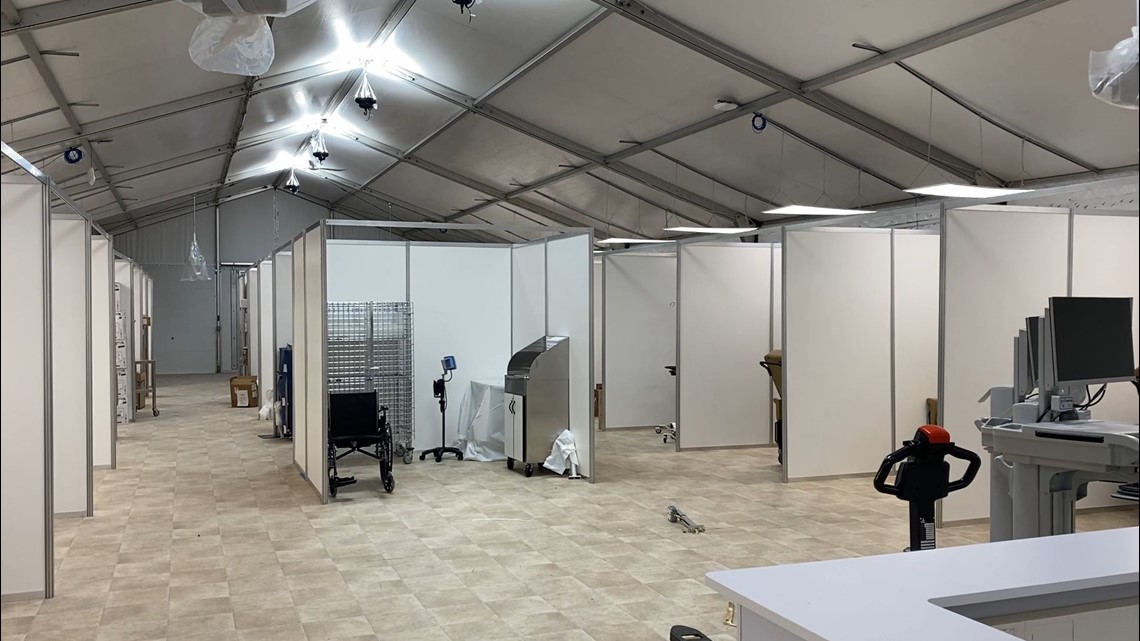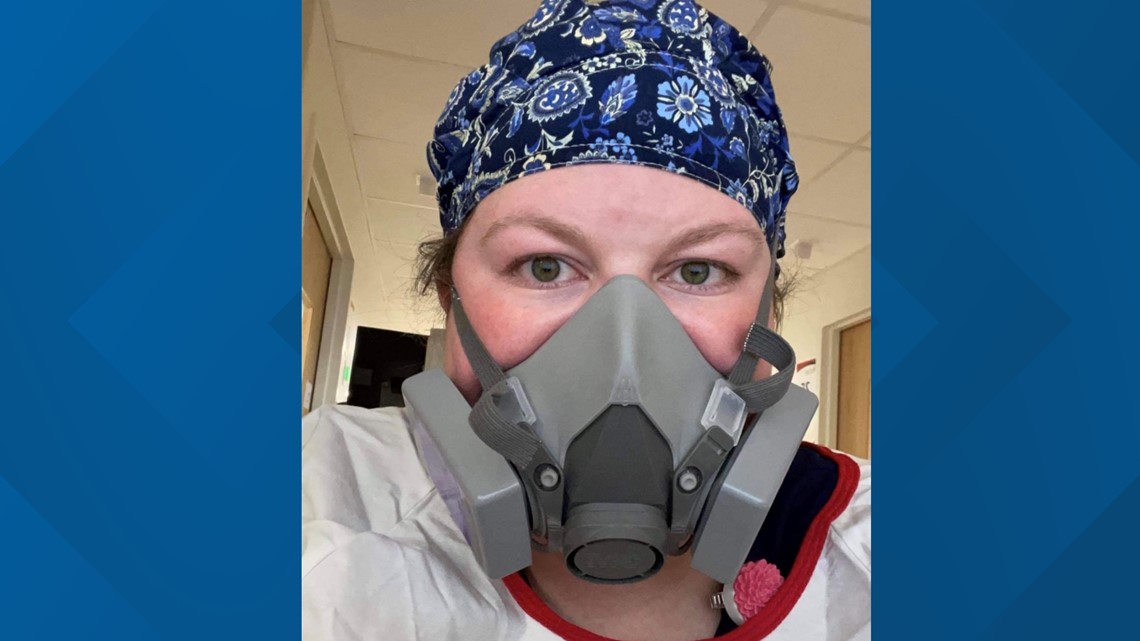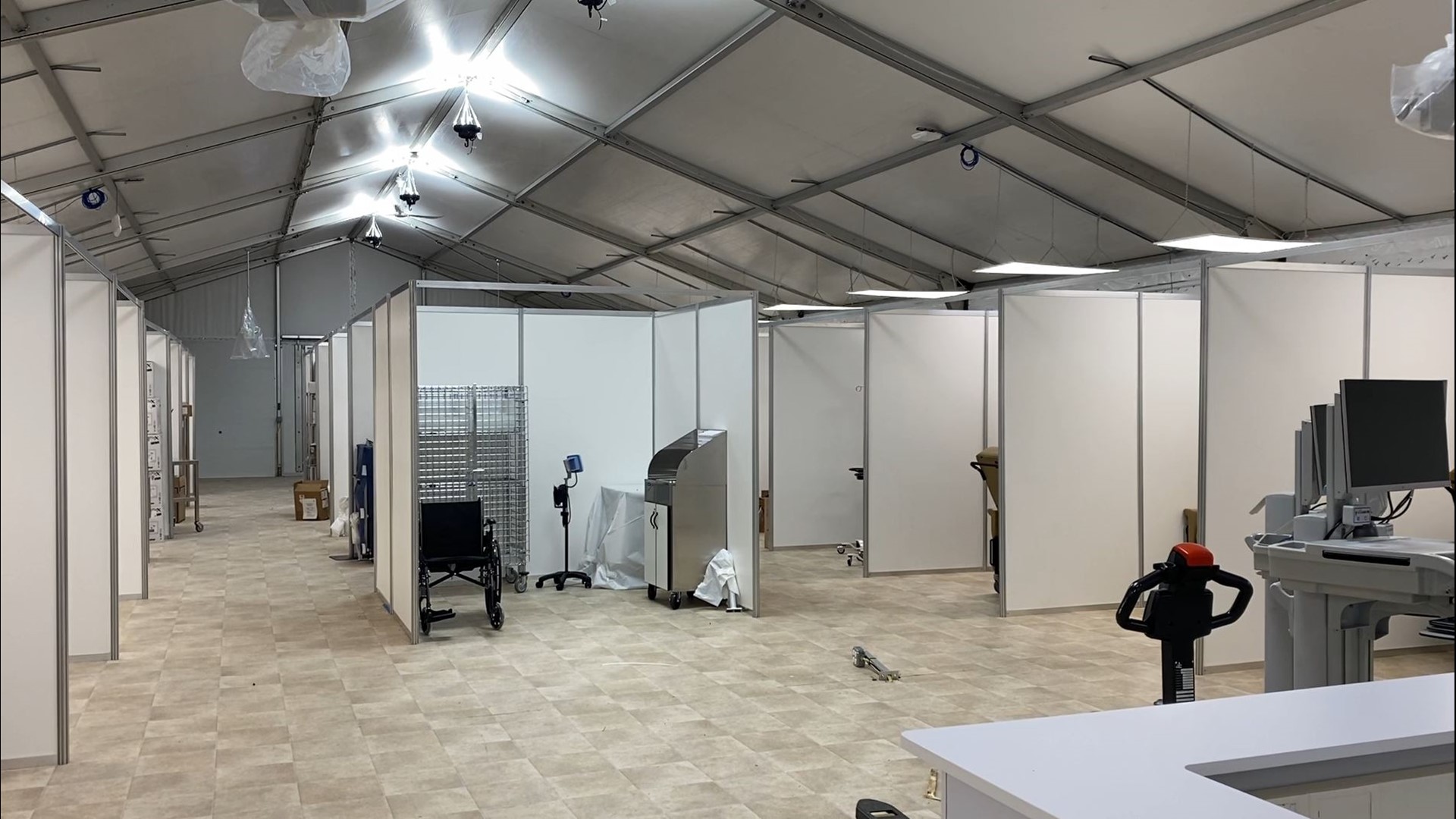PRINCE GEORGE'S COUNTY, Md. — Prince George’s County leads the number of COVID-19 cases in Maryland, with more than 77,000 people infected since this pandemic began.
Many of those who suffered the worst of COVID-19 and survived in Prince George’s County were helped by the nurses and doctors at Prince George’s Hospital Center in Cheverly. After a year of grueling hours and being pushed to the brink, many frontline workers are focused on their own recovery, while reflecting on the last year.
Nurse Robyn Peoples was pregnant at the outset of the pandemic and remembers when she initially heard about this new virus.
"I was home, at the table, about to have dinner with my 1-year-old and 3-year-old,” Peoples said. “I took it kind of lightly at first."
Along with Peoples, Dr. Elizabeth Clayborne also recalls hearing about this new virus, but her focus was elsewhere. She too was expecting.
"We were just in the throes of planning how we were going to do playdates and we'd be able to have this whole experience of being pregnant together in the E.D.,” Clayborne explained.
As these healthcare workers started to see the effects of coronavirus, that’s when fear set in.
“I started kind of freaking out in my head," Peoples said. "It wasn't outwardly. It was inwardly. Just feeling a little unsettled."
They were quickly overwhelmed with patients, there was a shortage of personal protective equipment and too many unknowns about this virus, like, how exactly it spreads.
"Chaos was sometimes taking place," Clayborne said. "I would come in and there would be ambulances lined up because we didn't have enough negative pressure rooms where COVID patients needed to go. So, I would have to go out to the ambo bay and maybe resuscitate someone or put a breathing tube in someone."
In the last year, nearly 2,500 people have been treated for COVID-19 by doctors and nurses in the University of Maryland Capital Region Health system, which includes Prince George’s Hospital Center.
The initial rush was so devastating, the hospital shut down to visitors and began setting up tents for more space. The tents are still in place to handle the most critically ill patients.


The hospital’s Chief Medical Officer, Dr. Joseph Wright, oversaw the initial response.
“We drill for disasters and mass casualty incidents all the time," Wright said. "They happen. You respond and they end. This is not designed for this kind of sustained intensity from the staff."
Hospital officials also had to call in healthcare workers from out of state, like Brianne Beane, a traveling nurse from Alabama. Beane traveled to emergency rooms and hotspots across the country.
She arrived at Prince George’s Hospital Center the week before Christmas.


“I wanted to quit many times and just go home. Now, I'm exhausted,” Beane said. "I remember these patients. I remember their names. I remember who they were. I remember their family. It just hurts. We as the nurses were there holding their hands at their last moment and that's been really hard."
The Prince George’s Hospital Center campus is much quieter, with roughly 90 COVID patients currently getting treatment. Now, the push is on getting people vaccinated along with helping doctors and nurses with their physical and mental health.
Peoples lost her baby at the outset of this pandemic but still stood at the front lines.
“I’m ok,” Peoples said.
Beane is traveling back to Alabama to be with her husband, after nearly a year of being separated.
“We need to take a step back and take care of ourselves so we can eventually come back and take care of our patients again the way that we need to,” Beane said.
Clayborne is caring for her 9-month-old daughter, who she said went through COVID with her and "came out perfect."
“Although there are still a lot of challenges and problems when I go to work," Clayborne said, "I can never stay that upset because I always get to come home to these faces and know that I'm taking care of other people and hopefully know I'm being a mother, physician and woman they can be proud of."
Prince George’s Hospital is encouraging its employees to use its Employee Assistance Program to help with unique needs. They’ve also set up a “Serenity Room,” for staff to have time alone.

